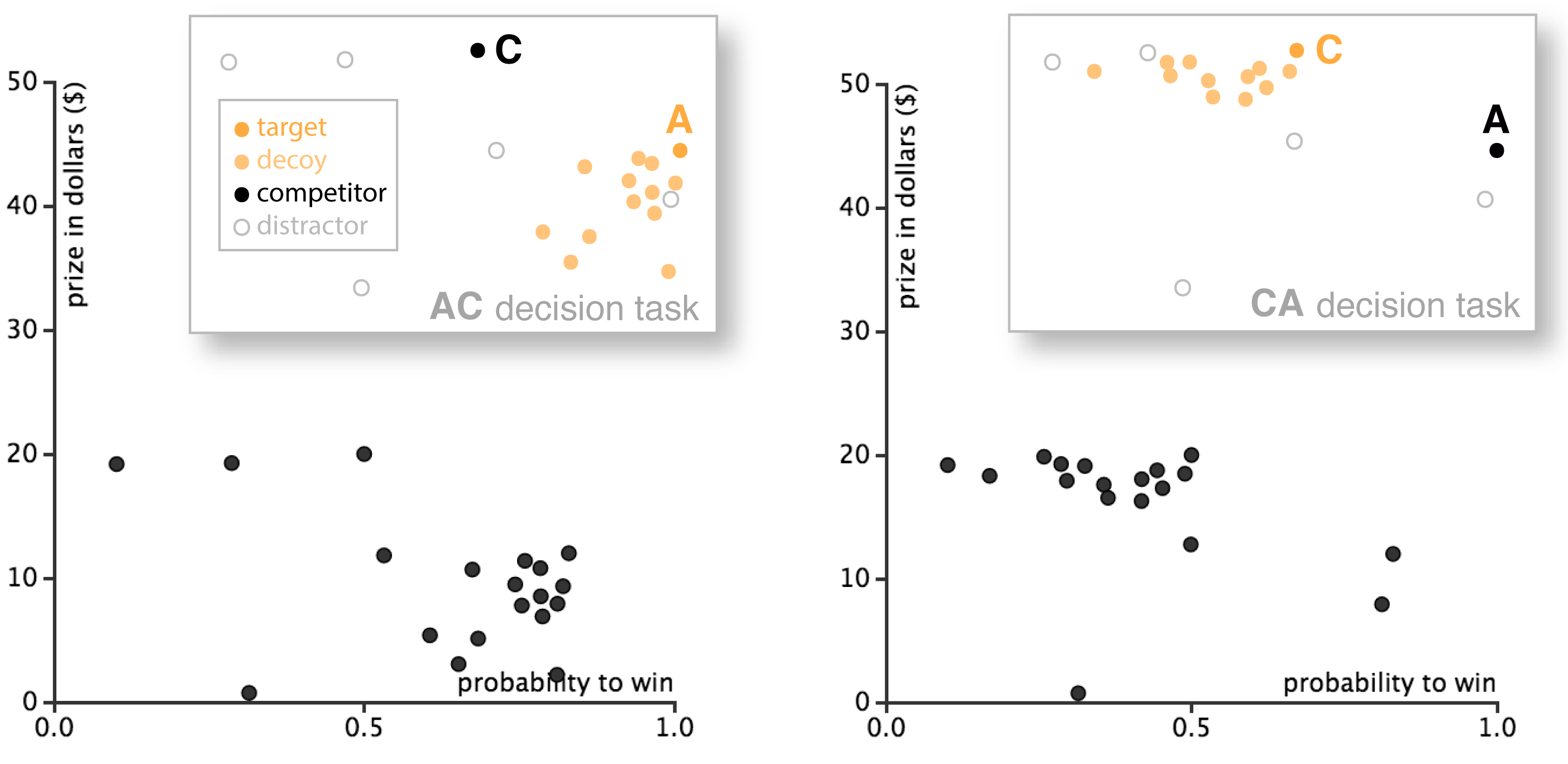Section: New Results
The Attraction Effect in Information Visualization
Participants : Evanthia Dimara [correspondant] , Anastasia Bezerianos, Pierre Dragicevic.
|
The attraction effect is a well-studied cognitive bias in decision making research, where one's choice between two alternatives is influenced by the presence of an irrelevant (dominated) third alternative. We examine whether this cognitive bias, so far only tested with three alternatives and simple presentation formats such as numerical tables, text and pictures, also appears in visualizations. Since visualizations can be used to support decision making — e.g., when choosing a house to buy or an employee to hire — a systematic bias could have important implications. In a first crowdsource experiment, we indeed partially replicated the attraction effect with three alternatives presented as a numerical table, and observed similar effects when they were presented as a scatterplot. In a second experiment, we investigated if the effect extends to larger sets of alternatives, where the number of alternatives is too large for numerical tables to be practical. Our findings indicate that the bias persists for larger sets of alternatives presented as scatterplots. We discuss implications for future research on how to further study and possibly alleviate the attraction effect.
More on the project Web page: www.aviz.fr/decoy.



